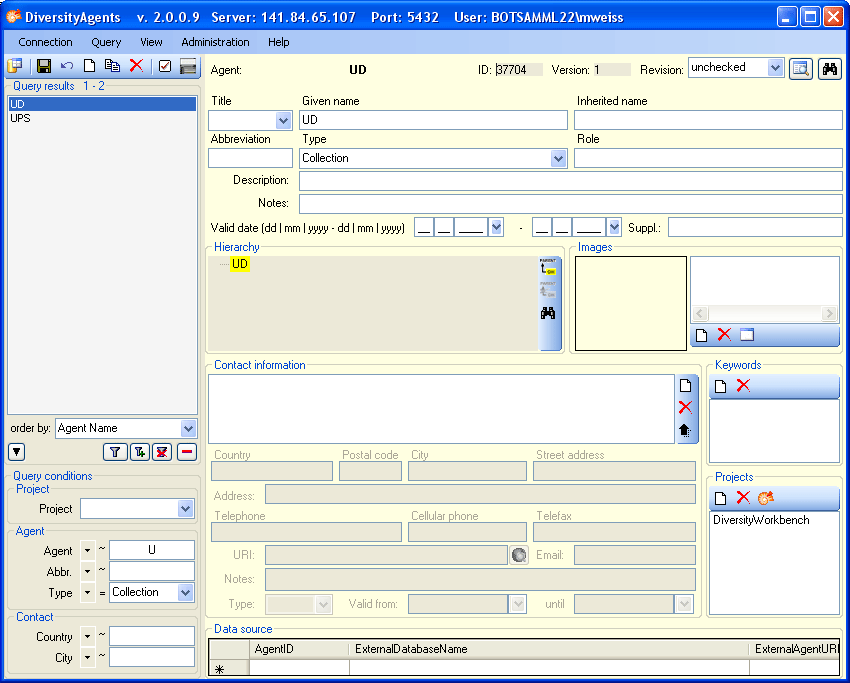

The data for an agents are entered in the upper part of the form (see image below).

The header of the form (see below) shows the combined name of the agent, its ID in the database, the version of the dataset and the revision level. The version is set by the database and will be increased with every change in the data.

To see the history of the changes
within a dataset, click on the
 button (see the history part for further details).
button (see the history part for further details).
By default an agent is not available for
publication indicated by the
 sign. If an agent should be published, click on the
sign. If an agent should be published, click on the
 button and remove the data withholding reason. The sign will
change to
button and remove the data withholding reason. The sign will
change to
 and the agent is now available for publication.
and the agent is now available for publication.
To set the language of the content, click
on the  button. The ISO-639-1-Code for the selected language will be shown and the icon will change to the selected language.
button. The ISO-639-1-Code for the selected language will be shown and the icon will change to the selected language.
DiversityAgents may contain several versions of the same name resp. person. To link these entries you can declare one name a synonym of the other. An overview of the synonymy is shown in the Synonymy part (see below). The accepted name resp. the entry not declared to be a synonym is shown as the top of the hierachy. To change to a name within the synonymy, just double-click on it.

To set the synonymy, click on the
 button to open a window where you can search for the entry, the current entry should become a synonym of. In the field [Syn.type] set the type of the
synonymy. The service of DiversityAgents is used by other
modules. Therefore it must be avoided to delete datasets. Instead of deleting an entry, set it a synonym
of a valid entry and set the type of the synonymy to replaced with.
If an agent was replaced or declared a synonym, the
button to open a window where you can search for the entry, the current entry should become a synonym of. In the field [Syn.type] set the type of the
synonymy. The service of DiversityAgents is used by other
modules. Therefore it must be avoided to delete datasets. Instead of deleting an entry, set it a synonym
of a valid entry and set the type of the synonymy to replaced with.
If an agent was replaced or declared a synonym, the
 button will change to
button will change to
 . Click on this button to change to the dataset that replaced the current dataset resp. its synonym. If a dataset was replace by
another entry, the form will change as
shown below. In the synonymy the replaced
agents are depicted in red.
. Click on this button to change to the dataset that replaced the current dataset resp. its synonym. If a dataset was replace by
another entry, the form will change as
shown below. In the synonymy the replaced
agents are depicted in red.

The data of the agent are stored in the table Agent.